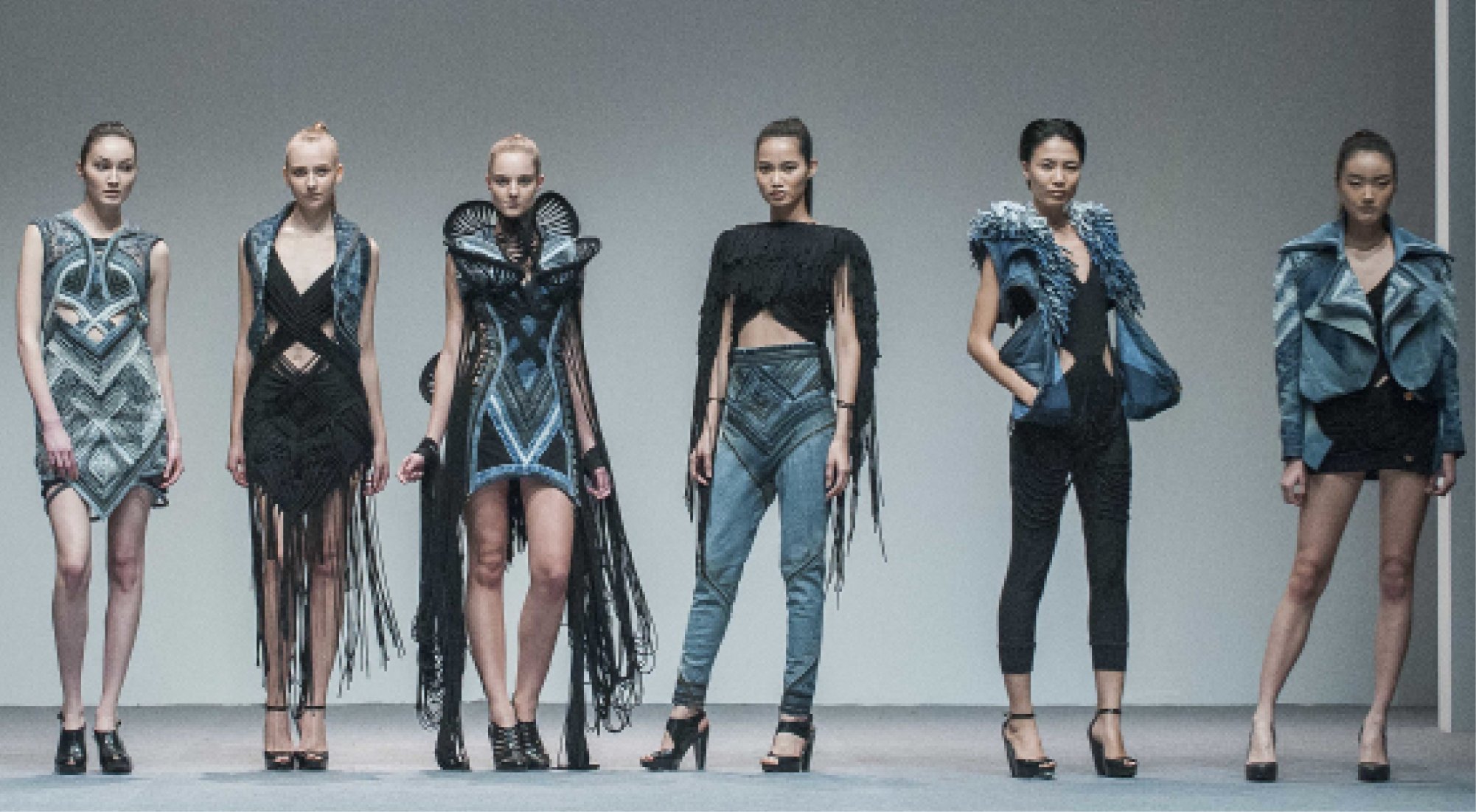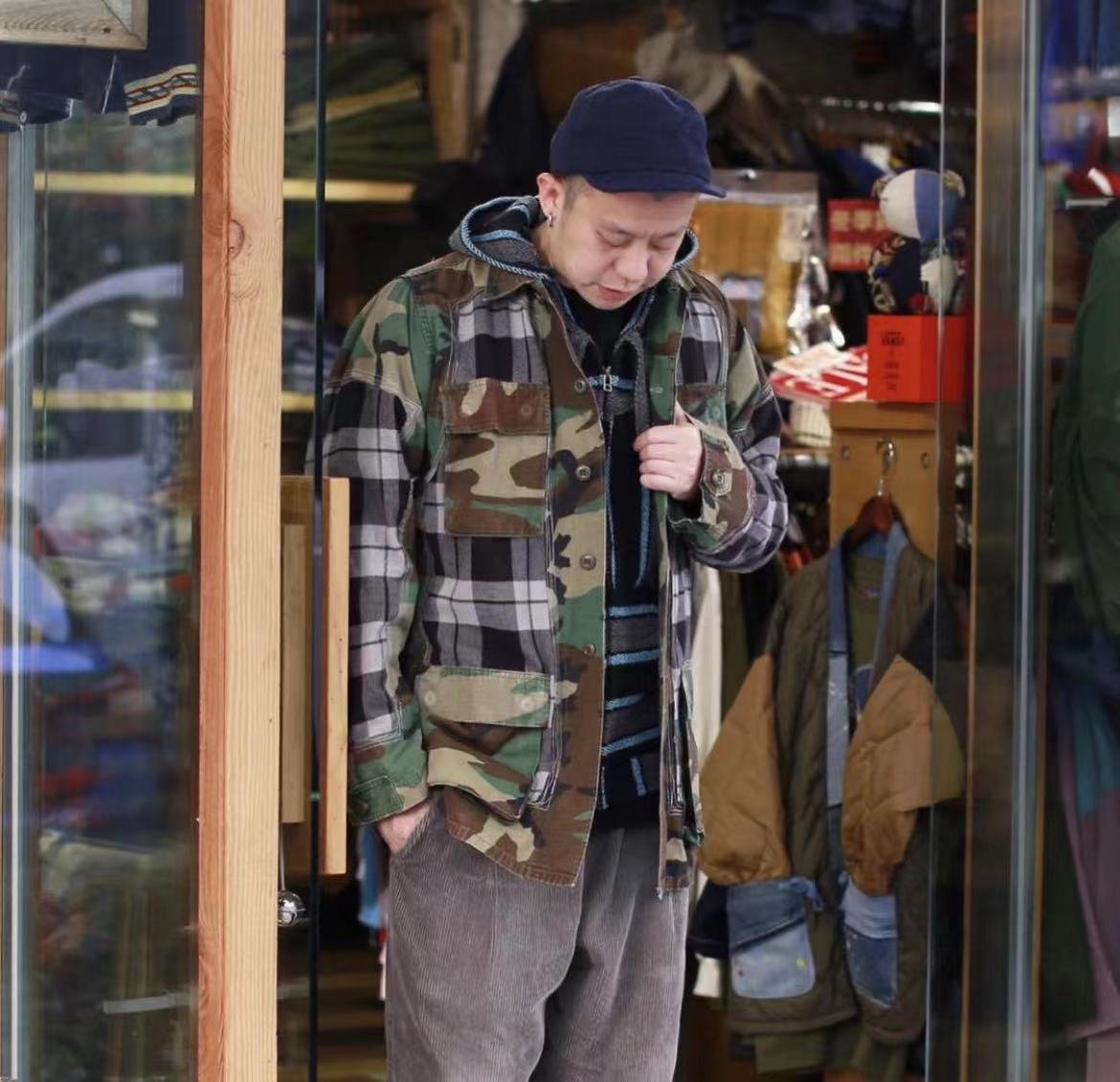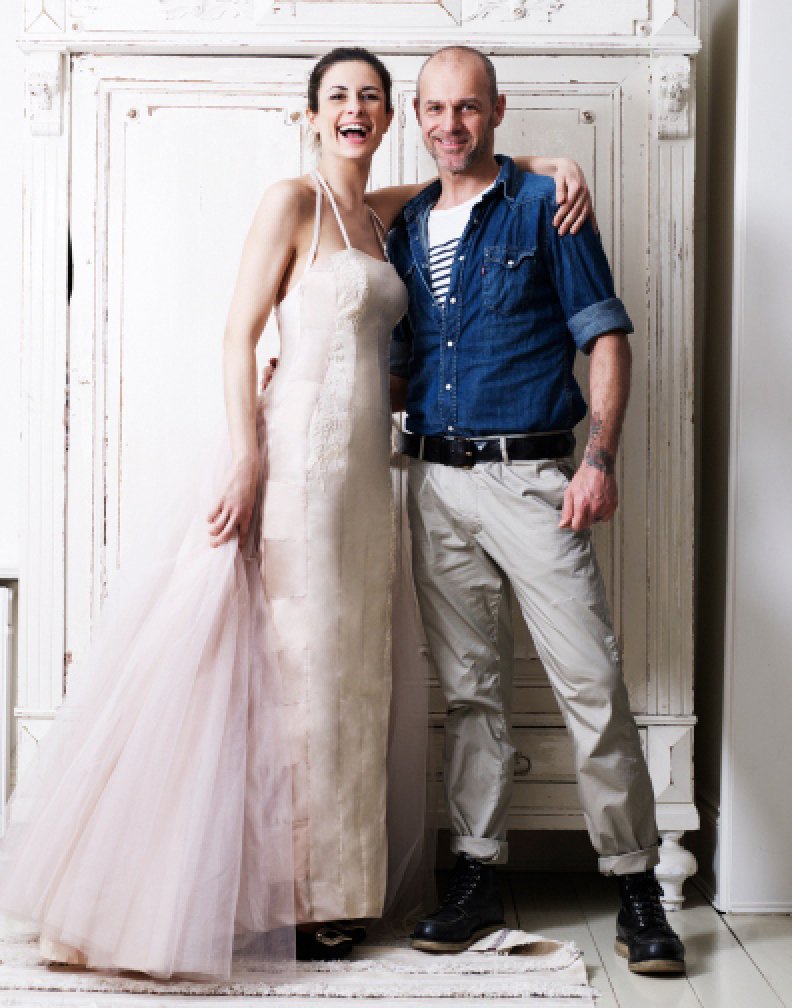Reconstruction Guide
Reconstruction Guide
Created by Redress

Image credit: Victor Fraile @ Studio East, Collection by Karen Jessen for the Redress Design Award 2013
What iS it?
Reconstruction is a form of upcycling.
The principle of upcycling is transforming materials into products of equal or higher quality. In fashion, this means revaluing what the industry considers textile ‘waste’ by prolonging the textiles’ life through creativity, turning them into new designs.
At Redress we have further categorised waste materials used in reconstruction to be previously worn garments or preformed finished clothing products. We categorise the repurposing of ‘waste’ material that is in textile form as upcycling. Check out our separate guide on the upcycling technique.
The reconstruction technique involves first deconstructing garments and then reconstructing the ‘waste’ materials into new designs. It fits under the circular design strategy ‘Design for Low Waste’, tackling the waste issue at source by reusing and repurposing both pre- and post-consumer waste.
Why do It?
The average consumer now buys 60% more clothing items in a year than they did about 15 years ago. [1] As fashion consumption rises, so does waste. Many of the clothes entering the landfill are still in good quality and are made with valuable materials. In 2019, the global fashion market was worth US$1.9 trillion and on track to keep growing at 4%, reaching US$3 trillion by 2030. [2]
When textiles are wasted, so too are the human labour and natural resources that went into making them. By reconstructing garments into products of higher quality, you can prolong their life, slow down unnecessary textile production, and reduce the demand on natural resources. This also prevents the ‘waste’ from being downcycled or discarded.
How to Do it?
1 FIrst, decide
Reconstruction is often incorrectly considered to be an exclusive design approach, since the designs are often not easily reproducible owing to the variable supply of working materials.
So first, based on your material supply, decide if you want to make a reproducible design with a systematic approach, or exclusive unique designs, which might require more labour and time and most likely not be scalable or replicable.
2 SOurce
Just like the upcycling technique, the key to reconstruction is to start with sourcing the materials. Your choice of textiles will greatly impact the design you are able to make. The availability, quality, or size of the materials usually varies. Use them as your main source of design inspiration.
Reconstruction also has its economic perks because it is often easier and cheaper to source ‘waste’ materials rather than new ones.
Look at your own waste streams or those of the wider textile industry to source clothing samples, unsold clothing waste, or secondhand clothing. Look for quality garments regardless of the size, shape, or style.
Expert Tip
Kate Jones
Creative Consultant, Miele
Look for good quality textiles and let quality be your guide here. Don’t be afraid of the odd stain or hole as these can be washed away and repaired. Remember, no one wants to wear smelly and stained garments, even if they are reconstructed, so make sure you wash them well before you redesign them.
3 DEsign and Make
Look closely at the original garments’ features. Let them inspire you: What is the garment’s best feature? How can you get the most out of it? Can certain details be reused? Can you create a new textile from it?
Start deconstructing, shredding, quilting, patchworking, and draping. Your imagination is the only limit. If you want to make reproducible designs, find common features from the type of the original garment that can be used in a systematic way. Finally, make sure you have quality and clean workmanship to avoid your finished garment looking ripped or broken.
Expert Tip
Liora Lassalle
Fashion Designer
Detailing and frills are great ways to use all the small pieces of a secondhand garment and turn them into something new and interesting.

Image credit: Dreamandawake
Swedish brand Dreamandawake collects secondhand dresses from around the world, which they redesign and transform into unique reconstructed garments.


Image credit: Midwest Vintage Store
Hong Kong vintage shop Midwest Vintage Store created their own remake brand, First Edition Design, which reconstructs vintage clothing to create unique outfits for vintage lovers.


Image credit: Redress
Hong Kong designer and Redress Design Award 2022 Hong Kong Best winner Patrick Lam used reconstruction in his competition collection.

Image credit: Fashion Clinic
Hong Kong brand Fashion Clinic specialises in redesigning and upcycling surplus garments and material through reconstruction.
GARY HARVEY
ON RECONSTRUCTION DESIGN
Designer and Fashion Director, 125 Magazine
Co-founder, Fashion Revolution
Originally published in 2013

Image credit: Gary Harvey
Gary Harvey’s reconstructed gown made using various reconstructed vintage dresses was worn by sustainable fashion icon and celebrity Livia Firth at the Oscars.
“Reconstruction is about creating something new and desirable from something old and unwanted.”
After 20 years working in the fashion industry, I’ve seen the vast amounts of textiles and clothing waste firsthand, and my sustainable fashion collections are a reaction to this. Mass consumerist culture and fast fashion have changed our relationship with clothing. Now, vast amounts of good quality clothing are sent to landfill every day.
Reconstruction is the process where designers can reconstruct old and unwanted clothing to make something new and desirable. The environmental benefits of reconstruction are immense. When you consider the earth’s limited supply of natural resources, we simply cannot sustain our current rates of consumption, as at some point resources will run out. Therefore, recycling and reconstruction will become not an elective choice, but a necessity.
My primary goal as a fashion designer is to amaze and inspire people with my collections by making each silhouette and design unique. The fundamental art of reconstruction is selecting interesting items and creating unique combinations that add value. My cutting and construction techniques are inspired by vintage couture and each component is hand-selected. I carefully combine individual garments and vintage textiles, which I drape and re-sew together to create one harmonious piece from multiple different garments.
My secondary message as a fashion designer is about the politics of garment waste and recycling. Everything I use in my dresses is 100 percent recycled.

Image credit: Alexandra Thérèse
Gary Harvey’s dresses have been exhibited in some of the world’s best museums, including The Victoria and Albert Museum and the Museum of Modern Art.
MY TOP TIPS FOR RECONSTRUCTION DESIGN
- Style and fashion should inform your decision making
- Select garments that work and hang well together
- Make sure your colours complement each other
- Use a good pattern or consider draping directly onto the body
- Use quality construction techniques to ensure a good finish
Footnotes
[1] McKinsey Company (2016), Style that’s sustainable: A new fast-fashion formula
[2] Fibre2fashion.com (2019), The Big Shift: 5 Mega Trends That Will Influence Future Strategies



